History
Great Women in Disney History
Given that March is Women’s History Month, Wade Sampson takes a moment to pay tribute to all the lovely ladies who helped to make the “Magical World of Disney” that much more magical.
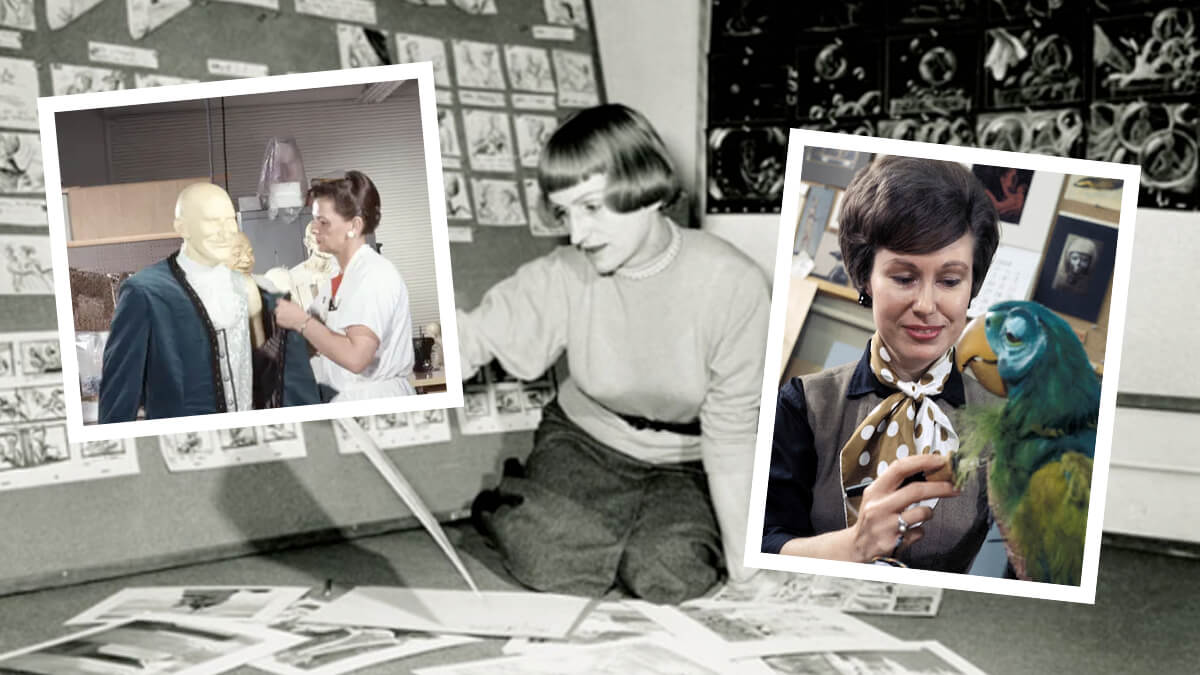
In interviews, Walt used to joke that he was always surrounded by women who influenced his life and work and that even his dog was female. One of the things that made Walt so unique for his time was not only his respect and appreciation for the talents and intelligence of women but his commitment to employing them in previously male dominated industries like animation and theme parks.
The Disney animated films, of course, are filled with examples of strong, interesting women from Minnie Mouse to Tinker Bell to Cinderella to Jessica Rabbit to — more recently — Kim Possible. Their voices were supplied by equally interesting women including Jodi Benson, Ilene Woods, Eleanor Audley, Verna Feldon and Susan Egan (the first Belle on Broadway as well as the voice of Meg in “Hercules”) to name just a handful. Even the live action films made during Walt’s tenure featured women of spirit and strength with actresses like Dorothy McGuire, Janet Munro and Kim Richards.
And the list seems to never end. There are so many others like Russi Taylor (the official voice of Minnie Mouse who is married to Wayne Allwine, the official voice of Mickey Mouse), Julie Andrews (as well as her Disney alter ego, Mary Poppins), Margaret Kerry (the live action reference for Tinker Bell), Tiny Kline (the first Tinker Bell to fly over Sleeping Beauty Castle and she was a grandmother at the time), Adrianna Caselotti (the voice of Snow White who was named a Disney Legend in 1994), Mary Costa (the voice of Princess Aurora who was named a Disney Legend in 1999), Julie Reihm (first Disneyland Ambassador in 1965) or even Walt’s mother, Flora Disney whose encouragement and support produced the Walt Disney we love.
So — in celebration of Women’s History Month — et’s take a brief look and celebrate some of the women who shaped Disney History:
MARY BLAIR: Started work at the Disney Studios in 1939 and quickly became one of Walt’s favorites because of her color and design work which is apparent in films like “Alice in Wonderland” and “The Three Caballeros” as well as shorts like “Susie the Blue Coupe” and “The Little House”. She was the key designer for “it’s a small world” attraction and did the mural in the Contemporary Resort at WDW. She was named a Disney Legend in 1991 and a book about her work by Animation historian John Canemaker was published last year. Blair left the Disney organization in 1953 to freelance in advertising and children’s book illustrations. A decade later, Walt Disney personally asked her to design “it’s a small world.” During her last years, family and personal problems exacerbated by alcohol abuse led to a deterioration of Mary Blair’s physical and mental health and, subsequently, her art. She died in 1978 in Soquel, California, at 67.
LINDA WOOLVERTON: Wrote the screenplays for “Homeward Bound: The Incredible Journey” as well as the screenplay for the animated version of “Beauty and the Beast”. She even adapted her screenplay for the Broadway version of the show.
LUCILLE MARTIN: Began work at Disney in 1964 and became the secretary of Walt Disney, Ron Miller and later Michael Eisner. In 1995, she was named Vice President to the Board of Directors.
VIRGINIA DAVIS: The child actress who performed in Walt Disney’s first Hollywood cartoons, the “Alice Comedies”. She was the first live action performer ever under contract to the Disney Studios.
HARRIET BURNS: The first woman hired by Imagineering in a creative rather than office capacity. She helped design and build prototypes for theme park attractions and among her many credits was the designer of the famous Mickey Mouse Clubhouse in the 1950s and designed all the singing birds for the original “Enchanted Tiki Room”. She was named a Disney Legend in 2000.
JOYCE CARLSON: Started her career at Disney in the Ink and Paint Department but during the work on the 1964 World’s Fair was moved to Imagineering where she was involved with “it’s a small world” and has helped create and maintain every version of that show in all the Disney theme parks worldwide. She was named a Disney Legend in 2000 and a wonderful interview with her done by Disney historian Jim Korkis appears in the recently released book, “Walt’s People”.
ALICE DAVIS: Wife of animator and Imaginer Marc Davis, she did costume designs and building for the Disney Studio including work on “it’s a small world” and “Pirates of the Caribbean” where she had to create a special girdle for the audio-animatronic redhead in the auction scene.
JULIE TAYMOR: First woman to ever win a TONY award for best direction of a musical for her work on the Broadway show, “The Lion King” in 1998. She also won another TONY that year for her costumes for the same show. In addition, she supplied additional lyrics for the show and did mask and puppet design.
BETTY TAYLOR: Personally chosen by Walt Disney, she performed as Slue Foot Sue at the Golden Horseshoe Revue, the world’s longest running stage show, at Disneyland for thirty one years from 1956-1987. She was named a Disney Legend in 1995.
ANNETTE FUNICELLO: One of the best known original Mouseketeers who also appeared in many Disney films like “Babes in Toyland”, her own serial on the original “Mickey Mouse Club” as well as being a recording star on the Disney record label.
DOLORES VOGHT: Walt’s original executive secretary from 1930 to 1965.
KATHY BEAUMONT: The voice and live action reference model for both Alice in “Alice in Wonderland” and Wendy in “Peter Pan” as well as supplying those voices for Disney theme park attractions. She was named a Disney Legend in 1998.
LEOTA TOOMBS: Disney Imagineer who is best known as the face in the crystal ball, Madame Leota, in the “Haunted Mansion” attraction. The voice of Madame Leota is Eleanor Audley (also the voice of Maleficent and Lady Tremaine). She is the only woman to portray two Disney villainesses. Leota’s real voice is used in the mini-Leota at the end of the attraction urging guests to hurry back.
CHARLOTTE CLARK: The seamstress who made the first plush Mickey and Minnie Mouse dolls and worked for the Disney Studio for many years creating prototypes of other Disney plush character dolls.
BRENDA CHAPMAN: First woman story head at Disney on the animated “The Lion King”. She also storyboarded sequences for “Beauty and the Beast” and “Rescuers Down Under”.
BIANCA MAJOLIE: Supplied story ideas and drawings to many Disney shorts (like “Elmer the Elephant”) as well as features like “Peter Pan” and “Cinderella”.
GRACE BAILEY: Spent forty years at Disney, much of that time as the head of Disney’s Ink and Paint Department where she trained and supervised the women who worked there. She was named a Disney Legend in 2000.
HELENE STANLEY: Besides performing as Davy Crockett’s wife in the popular television series, she was the live action reference model for both Disney princesses Cinderella and Princess Aurora (Sleeping Beauty).
LILLIAN BOUNDS DISNEY: Wife of Walt Disney, as well as credited with convincing him to change a mouse’s name from “Mortimer” to “Mickey” among many behind the scenes influences. Her major contribution made possible the new Walt Disney Concert Hall in Los Angeles. Became a Disney Legend in 2004.
DIANE DISNEY MILLER: Daughter of Walt Disney and wife of Ron Miller who wrote the first biography of Walt Disney and keeps Walt’s legacy alive through CD-Roms, DVDs and a website devoted to the life and accomplishments of her father and soon a museum in the San Francisco area.
EDNA FRANCIS DISNEY: Wife of Roy O. Disney and mother of Roy E. Disney and one of the most underappreciated women in Disney Heritage for her support of her husband especially with international clients of Disney. Became a Disney Legend in 2004.
HAYLEY MILLS: Actress in “Pollyanna” (for which she received a special Academy Award) as well as many memorable Disney live action films including “The Parent Trap” and “That Darn Cat”.
CECILY RIGDON: The “keeper of the keys” to Walt Disney’s apartment at Disneyland and a major influence in the development of the Disney Guest Relations tour guides and the Disney Ambassador program. She also traveled to the 1964 World’s Fair to train Disney guides as well as training the Guest Relations cast members as Walt Disney World opened.
History
The Super Bowl & Disney: The Untold Story Behind ‘I’m Going to Disneyland!’

One of the highlights of the Super Bowl isn’t just the game itself—it’s the moment when the winning quarterback turns to the camera and exclaims, “I’m going to Disney World!” This now-iconic phrase has been a staple of post-game celebrations for decades. But where did this tradition begin? Surprisingly, it didn’t originate in a stadium but at a dinner table in 1987, in a conversation involving Michael Eisner, George Lucas, and aviation pioneers Dick Rutan and Jeana Yeager.

The Unlikely Beginning of a Marketing Sensation
To understand the origins of this campaign, we have to go back to December 1986, when the Rutan Voyager became the first aircraft to fly around the world without stopping or refueling. Pilots Dick Rutan and Jeana Yeager completed the nine-day journey on December 23, 1986, flying over 26,000 miles before landing at Edwards Air Force Base. Their historic achievement earned them national recognition, and just days later, President Ronald Reagan awarded them the Presidential Citizen Medal at the White House.
Meanwhile, Disney was gearing up for the grand opening of Star Tours at Disneyland, set for January 12, 1987. Following its usual playbook of associating major theme park attractions with real-world pioneers, Disney’s PR team invited astronauts Gordon Cooper and Deke Slayton to the launch event. But in a twist, they also invited Rutan and Yeager, who were still making headlines.

A Dinner Conversation That Changed Advertising Forever
After the Star Tours opening ceremony, a private dinner was held with Disney CEO Michael Eisner, George Lucas, and Eisner’s wife, Jane. During the meal, Eisner asked Rutan and Yeager, “You just made history. You traveled non-stop around the planet on a plane without ever refueling. How are you ever going to top that, career-wise? What are you two gonna do next?”
Without hesitation, Jeana Yeager replied, “Well, after being cramped inside that tiny plane for nine days, I’m just glad to be anywhere else. And even though you folks were nice enough to fly us here, invite us to your party… Well, as soon as we finish eating, I’m gonna go over to the Park and ride some rides. I’m going to Disneyland.”
Jane Eisner immediately recognized the power of Yeager’s statement. On the car ride home, she turned to Michael and said, “That’s a great slogan. I think you should use that to promote the theme parks.” Like many husbands, Michael initially dismissed the idea, but Jane persisted. Eventually, Eisner relented and pitched it to his team.
The Super Bowl Connection
With Super Bowl XXI just around the corner, Disney’s PR team saw an opportunity. The game was set for January 25, 1987, at the Rose Bowl in Pasadena—just miles from Disney Studios. What if they convinced the winning quarterback to say, “I’m going to Disneyland” live on-air?
Disney quickly struck a deal with both quarterbacks—Phil Simms of the New York Giants and John Elway of the Denver Broncos—offering each $75,000 to deliver the line if their team won. Simms led the Giants to victory, making history as the first athlete to say, “I’m going to Disney World!” on national television.
A Marketing Triumph
That year’s Super Bowl had the second-highest viewership in television history, with 87 million people watching Simms say the famous line. The next day, Disney turned the clip into a national commercial, cementing the phrase as a marketing goldmine.
Since then, “I’m going to Disneyland” (or Disney World, depending on the commercial) has been a staple of championship celebrations, spanning the NFL, NBA, and even the Olympics. What started as a casual remark at dinner became one of the most successful advertising campaigns in history.
A Lasting Legacy
Jane Eisner’s keen instinct and Disney’s ability to act quickly on a great idea created a tradition that continues to captivate audiences. The “I’m going to Disneyland” campaign remains a testament to the power of spontaneous inspiration and smart marketing, proving that sometimes, the best ideas come from the most unexpected places.
To learn more about Disney’s ties to the world of sports, check out I Want That Too: A Disney History and Consumer Product Podcast.
History
The Evolution and History of Mickey’s ToonTown
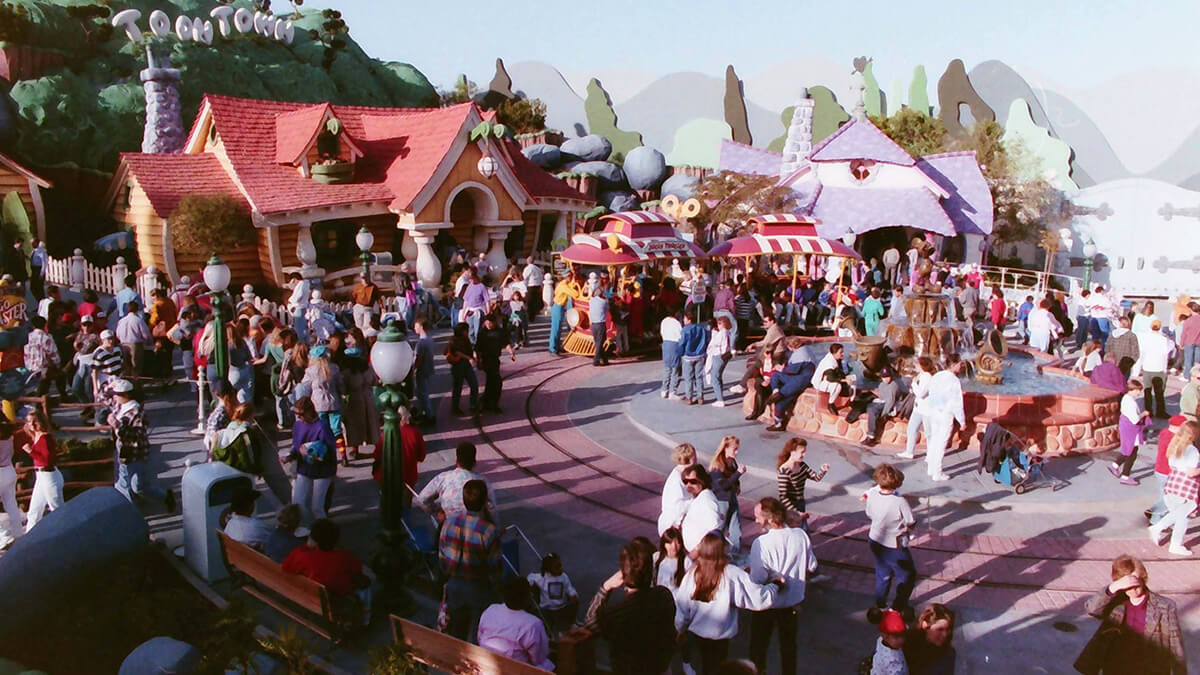
Disneyland in Anaheim, California, holds a special place in the hearts of Disney fans worldwide, I mean heck, it’s where the magic began after all. Over the years it’s become a place that people visit in search of memorable experiences. One fan favorite area of the park is Mickey’s Toontown, a unique land that lets guests step right into the colorful, “Toony” world of Disney animation. With the recent reimagining of the land and the introduction of Micky and Minnies Runaway Railway, have you ever wondered how this land came to be?
There is a fascinating backstory of how Mickey’s Toontown came into existence. It’s a tale of strategic vision, the influence of Disney executives, and a commitment to meeting the needs of Disney’s valued guests.
The Beginning: Mickey’s Birthdayland
The story of Mickey’s Toontown starts with Mickey’s Birthdayland at Walt Disney World’s Magic Kingdom. Opened in 1988 to celebrate Mickey Mouse’s 60th birthday, this temporary attraction was met with such overwhelming popularity that it inspired Disney executives to think bigger. The idea was to create a permanent, immersive land where guests could step into the animated world of Mickey Mouse and his friends.
In the early ’90s, Disneyland was in need of a refresh. Michael Eisner, the visionary leader of The Walt Disney Company at the time, had an audacious idea: create a brand-new land in Disneyland that would celebrate Disney characters in a whole new way. This was the birth of Mickey’s Toontown.
Initially, Disney’s creative minds toyed with various concepts, including the idea of crafting a 100-Acre Woods or a land inspired by the Muppets. However, the turning point came when they considered the success of “Who Framed Roger Rabbit.” This film’s popularity and the desire to capitalize on contemporary trends set the stage for Toontown’s creation.
From Concept to Reality: The Birth of Toontown
In 1993, Mickey’s Toontown opened its gates at Disneyland, marking the first time in Disney Park history where guests could experience a fully realized, three-dimensional world of animation. This new land was not just a collection of attractions but a living, breathing community where Disney characters “lived,” worked, and played.
Building Challenges: Innovative Solutions
The design of Mickey’s Toontown broke new ground in theme park aesthetics. Imagineers were tasked with bringing the two-dimensional world of cartoons into a three-dimensional space. This led to the creation of over 2000 custom-built props and structures that embodied the ‘squash and stretch’ principle of animation, giving Toontown its distinctiveness.
And then there was also the challenge of hiding the Team Disney Anaheim building, which bore a striking resemblance to a giant hotdog. The Imagineers had to think creatively, using balloon tests and imaginative landscaping to seamlessly integrate Toontown into the larger park.
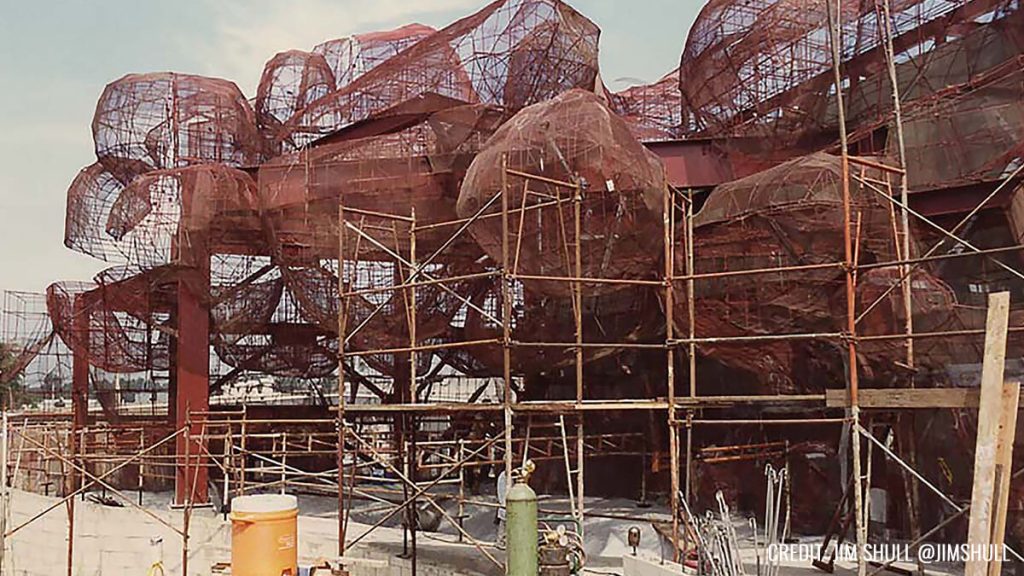
Key Attractions: Bringing Animation to Life
Mickey’s Toontown featured several groundbreaking attractions. “Roger Rabbit’s Car Toon Spin,” inspired by the movie “Who Framed Roger Rabbit,” became a staple of Toontown, offering an innovative ride experience. Gadget’s Go-Coaster, though initially conceived as a Rescue Rangers-themed ride, became a hit with younger visitors, proving that innovative design could create memorable experiences for all ages.
Another crown jewel of Toontown is Mickey’s House, a walkthrough attraction that allowed guests to explore the home of Mickey Mouse himself. This attraction was more than just a house; it was a carefully crafted piece of Disney lore. The house was designed in the American Craftsman style, reflecting the era when Mickey would have theoretically purchased his first home in Hollywood. The attention to detail was meticulous, with over 2000 hand-crafted, custom-built props, ensuring that every corner of the house was brimming with character and charm. Interestingly, the design of Mickey’s House was inspired by a real home in Wichita Falls, making it a unique blend of real-world inspiration and Disney magic.
Mickey’s House also showcased Disney’s commitment to creating interactive and engaging experiences. Guests could make themselves at home, sitting in Mickey’s chair, listening to the radio, and exploring the many mementos and references to Mickey’s animated adventures throughout the years. This approach to attraction design – where storytelling and interactivity merged seamlessly – was a defining characteristic of ToonTown’s success.
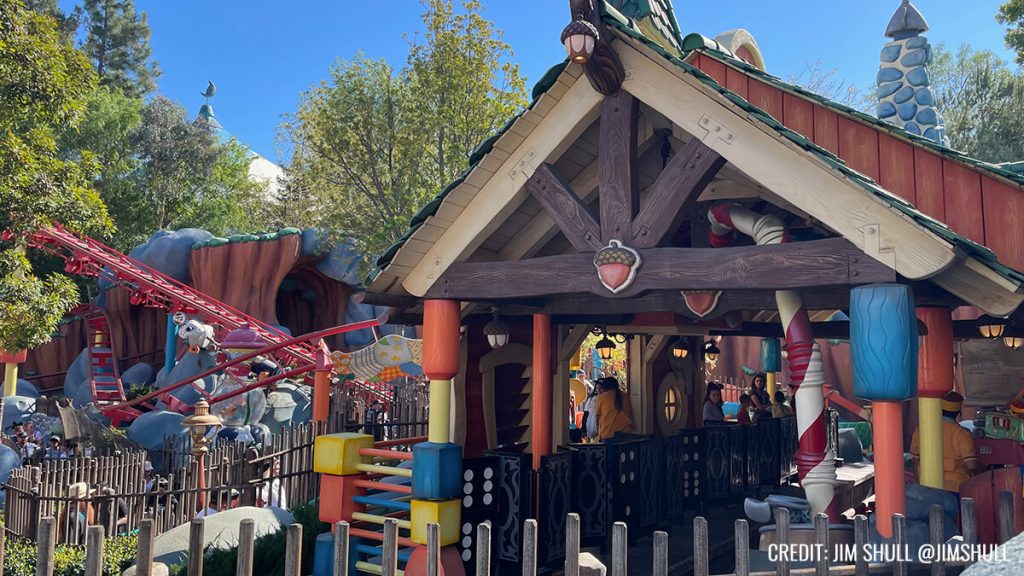
Executive Decisions: Shaping ToonTown’s Unique Attractions
The development of Mickey’s Toontown wasn’t just about creative imagination; it was significantly influenced by strategic decisions from Disney executives. One notable input came from Jeffrey Katzenberg, who suggested incorporating a Rescue Rangers-themed ride. This idea was a reflection of the broader Disney strategy to integrate popular contemporary characters and themes into the park, ensuring that the attractions remained relevant and engaging for visitors.
In addition to Katzenberg’s influence, Frank Wells, the then-President of The Walt Disney Company, played a key role in the strategic launch of Toontown’s attractions. His decision to delay the opening of “Roger Rabbit’s Car Toon Spin” until a year after Toontown’s debut was a calculated move. It was designed to maintain public interest in the park by offering new experiences over time, thereby giving guests more reasons to return to Disneyland.
These executive decisions highlight the careful planning and foresight that went into making Toontown a dynamic and continuously appealing part of Disneyland. By integrating current trends and strategically planning the rollout of attractions, Disney executives ensured that Toontown would not only capture the hearts of visitors upon its opening but would continue to draw them back for new experiences in the years to follow.
Global Influence: Toontown’s Worldwide Appeal
The concept of Mickey’s Toontown resonated so strongly that it was replicated at Tokyo Disneyland and influenced elements in Disneyland Paris and Hong Kong Disneyland. Each park’s version of Toontown maintained the core essence of the original while adapting to its cultural and logistical environment.
Evolution and Reimagining: Toontown Today
As we approach the present day, Mickey’s Toontown has recently undergone a significant reimagining to welcome “Mickey & Minnie’s Runaway Railway” in 2023. This refurbishment aimed to enhance the land’s interactivity and appeal to a new generation of Disney fans, all while retaining the charm that has made ToonTown a beloved destination for nearly three decades.
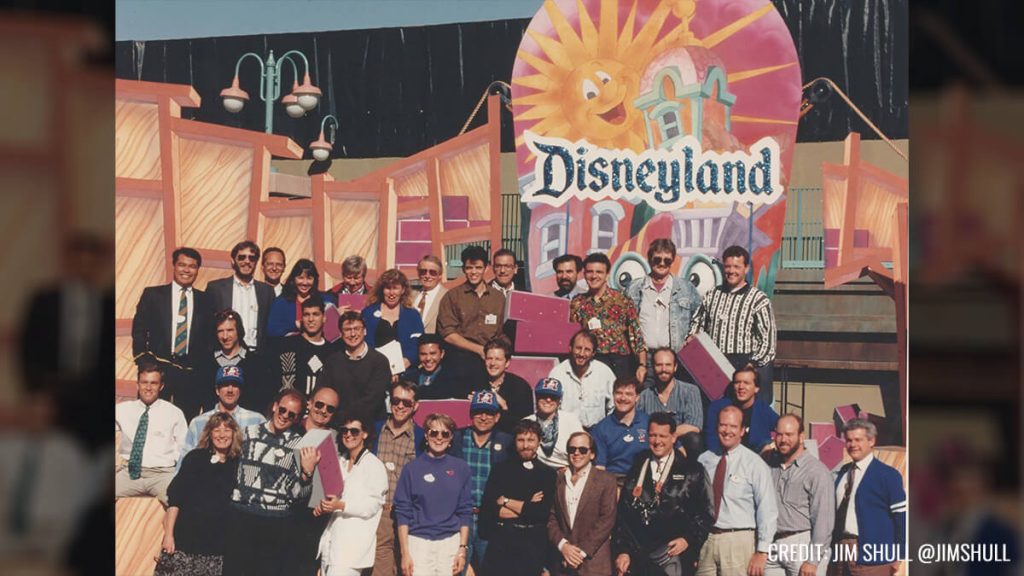
Dive Deeper into ToonTown’s Story
Want to know more about Mickey’s Toontown and hear some fascinating behind-the-scenes stories, then check out the latest episode of Disney Unpacked on Patreon @JimHillMedia. In this episode, the main Imagineer who worked on the Toontown project shares lots of interesting stories and details that you can’t find anywhere else. It’s full of great information and fun facts, so be sure to give it a listen!
History
Unpacking the History of the Pixar Place Hotel
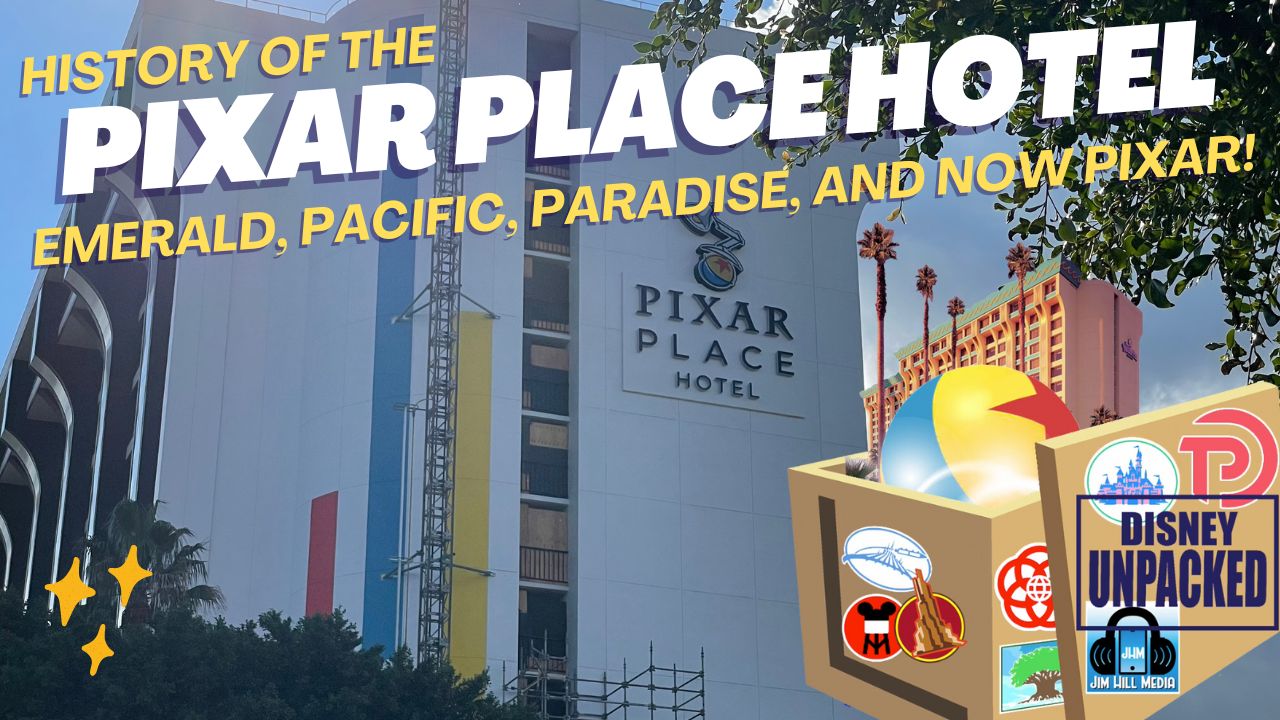
Pixar Place Hotel, the newly unveiled 15-story tower at the Disneyland Resort, has been making waves in the Disney community. With its unique Pixar-themed design, it promises to be a favorite among visitors.
However, before we delve into this exciting addition to the Disneyland Resort, let’s take a look at the fascinating history of this remarkable hotel.
The Emergence of the Disneyland Hotel
To truly appreciate the story of the Pixar Place Hotel, we must turn back the clock to the early days of Disneyland. While Walt Disney had the visionary ideas and funding to create the iconic theme park, he faced a challenge when it came to providing accommodations for the park’s visitors. This is where his friend Jack Wrather enters the picture.
Jack Wrather, a fellow pioneer in the television industry, stepped in to assist Walt Disney in realizing his dream. Thanks to the success of the “Lassie” TV show produced by Wrather’s company, he had the financial means to build a hotel right across from Disneyland.
The result was the Disneyland Hotel, which opened its doors in October 1955. Interestingly, the early incarnation of this hotel had more of a motel feel than a hotel, with two-story buildings reminiscent of the roadside motels popular during the 1950s. The initial Disneyland Hotel consisted of modest structures that catered to visitors looking for affordable lodging close to the park. While the rooms were basic, it marked the beginning of something extraordinary.
The Evolution: From Emerald of Anaheim to Paradise Pier
As Disneyland’s popularity continued to soar, so did the demand for expansion and improved accommodations. In 1962, the addition of an 11-story tower transformed the Disneyland Hotel, marking a significant transition from a motel to a full-fledged hotel.
The addition of the 11-story tower elevated the Disneyland Hotel into a more prominent presence on the Anaheim skyline. At the time, it was the tallest structure in all of Orange County. The hotel’s prime location across from Disneyland made it an ideal choice for visitors. With the introduction of the monorail linking the park and the hotel, accessibility became even more convenient. Unique features like the Japanese-themed reflecting pools added to the hotel’s charm, reflecting a cultural influence that extended beyond Disney’s borders.
Japanese Tourism and Its Impact
During the 1960s and 1970s, Disneyland was attracting visitors from all corners of the world, including Japan. A significant number of Japanese tourists flocked to Anaheim to experience Walt Disney’s creation. To cater to this growing market, it wasn’t just the Disneyland Hotel that aimed to capture the attention of Japanese tourists. The Japanese Village in Buena Park, inspired by a similar attraction in Nara, Japan, was another significant spot.
These attractions sought to provide a taste of Japanese culture and hospitality, showcasing elements like tea ceremonies and beautiful ponds with rare carp and black swans. However, the Japanese Village closed its doors in 1975, likely due to the highly competitive nature of the Southern California tourist market.
The Emergence of the Emerald of Anaheim
With the surge in Japanese tourism, an opportunity arose—the construction of the Emerald of Anaheim, later known as the Disneyland Pacific Hotel. In May 1984, this 15-story hotel opened its doors.
What made the Emerald unique was its ownership. It was built not by The Walt Disney Company or the Oriental Land Company (which operated Tokyo Disneyland) but by the Tokyu Group. This group of Japanese businessmen already had a pair of hotels in Hawaii and saw potential in Anaheim’s proximity to Disneyland. Thus, they decided to embark on this new venture, specifically designed to cater to Japanese tourists looking to experience Southern California.
Financial Challenges and a Changing Landscape
The late 1980s brought about two significant financial crises in Japan—the crash of the NIKKEI stock market and the collapse of the Japanese real estate market. These crises had far-reaching effects, causing Japanese tourists to postpone or cancel their trips to the United States. As a result, reservations at the Emerald of Anaheim dwindled.
To adapt to these challenging times, the Tokyu Group merged the Emerald brand with its Pacific hotel chain, attempting to weather the storm. However, the financial turmoil took its toll on the Emerald, and changes were imminent.
The Transition to the Disneyland Pacific Hotel
In 1995, The Walt Disney Company took a significant step by purchasing the hotel formerly known as the Emerald of Anaheim for $35 million. This acquisition marked a change in the hotel’s fortunes. With Disney now in control, the hotel underwent a name change, becoming the Disneyland Pacific Hotel.
Transformation to Paradise Pier
The next phase of transformation occurred when Disney decided to rebrand the hotel as Paradise Pier Hotel. This decision aligned with Disney’s broader vision for the Disneyland Resort.
While the structural changes were limited, the hotel underwent a significant cosmetic makeover. Its exterior was painted to complement the color scheme of Paradise Pier, and wave-shaped crenellations adorned the rooftop, creating an illusion of seaside charm. This transformation was Disney’s attempt to seamlessly integrate the hotel into the Paradise Pier theme of Disney’s California Adventure Park.
Looking Beyond Paradise Pier: The Shift to Pixar Place
In 2018, Disneyland Resort rebranded Paradise Pier as Pixar Pier, a thematic area dedicated to celebrating the beloved characters and stories from Pixar Animation Studios. As a part of this transition, it became evident that the hotel formally known as the Disneyland Pacific Hotel could no longer maintain its Paradise Pier theme.
With Pixar Pier in full swing and two successful Pixar-themed hotels (Toy Story Hotels in Shanghai Disneyland and Tokyo Disneyland), Disney decided to embark on a new venture—a hotel that would celebrate the vast world of Pixar. The result is Pixar Place Hotel, a 15-story tower that embraces the characters and stories from multiple Pixar movies and shorts. This fully Pixar-themed hotel is a first of its kind in the United States.
The Future of Pixar Place and Disneyland Resort
As we look ahead to the future, the Disneyland Resort continues to evolve. The recent news of a proposed $1.9 billion expansion as part of the Disneyland Forward project indicates that the area surrounding Pixar Place is expected to see further changes. Disneyland’s rich history and innovative spirit continue to shape its destiny.
In conclusion, the history of the Pixar Place Hotel is a testament to the ever-changing landscape of Disneyland Resort. From its humble beginnings as the Disneyland Hotel to its transformation into the fully Pixar-themed Pixar Place Hotel, this establishment has undergone several iterations. As Disneyland Resort continues to grow and adapt, we can only imagine what exciting developments lie ahead for this iconic destination.
If you want to hear more stories about the History of the Pixar Place hotel, check our special edition of Disney Unpacked over on YouTube.
Stay tuned for more updates and developments as we continue to explore the fascinating world of Disney, one story at a time.
-
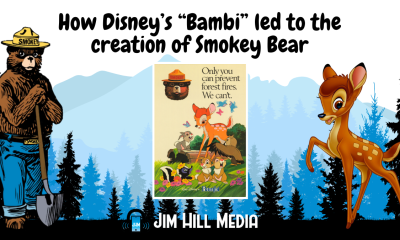
 Film & Movies12 months ago
Film & Movies12 months agoHow Disney’s “Bambi” led to the creation of Smokey Bear
-

 Merchandise12 months ago
Merchandise12 months agoIntroducing “I Want That Too” – The Ultimate Disney Merchandise Podcast
-

 Theme Parks & Themed Entertainment6 months ago
Theme Parks & Themed Entertainment6 months agoDisney’s Forgotten Halloween Event: The Original Little Monsters on Main Street
-

 Theme Parks & Themed Entertainment7 months ago
Theme Parks & Themed Entertainment7 months agoThe Story of Mickey’s Not-So-Scary Halloween Party: From One Night to a Halloween Family Tradition
-

 Film & Movies7 months ago
Film & Movies7 months agoHow “An American Tail” Led to Disney’s “Hocus Pocus”
-

 Theme Parks & Themed Entertainment5 months ago
Theme Parks & Themed Entertainment5 months agoDisney and Macy’s 90-Year Thanksgiving Day Parade Partnership: From Mickey’s First Balloon to Minnie’s Big Debut
-

 Television & Shows3 months ago
Television & Shows3 months agoHow the Creators of South Park Tricked A-List Celebrities to Roast Universal – “Your Studio & You”
-

 History2 months ago
History2 months agoThe Super Bowl & Disney: The Untold Story Behind ‘I’m Going to Disneyland!’







